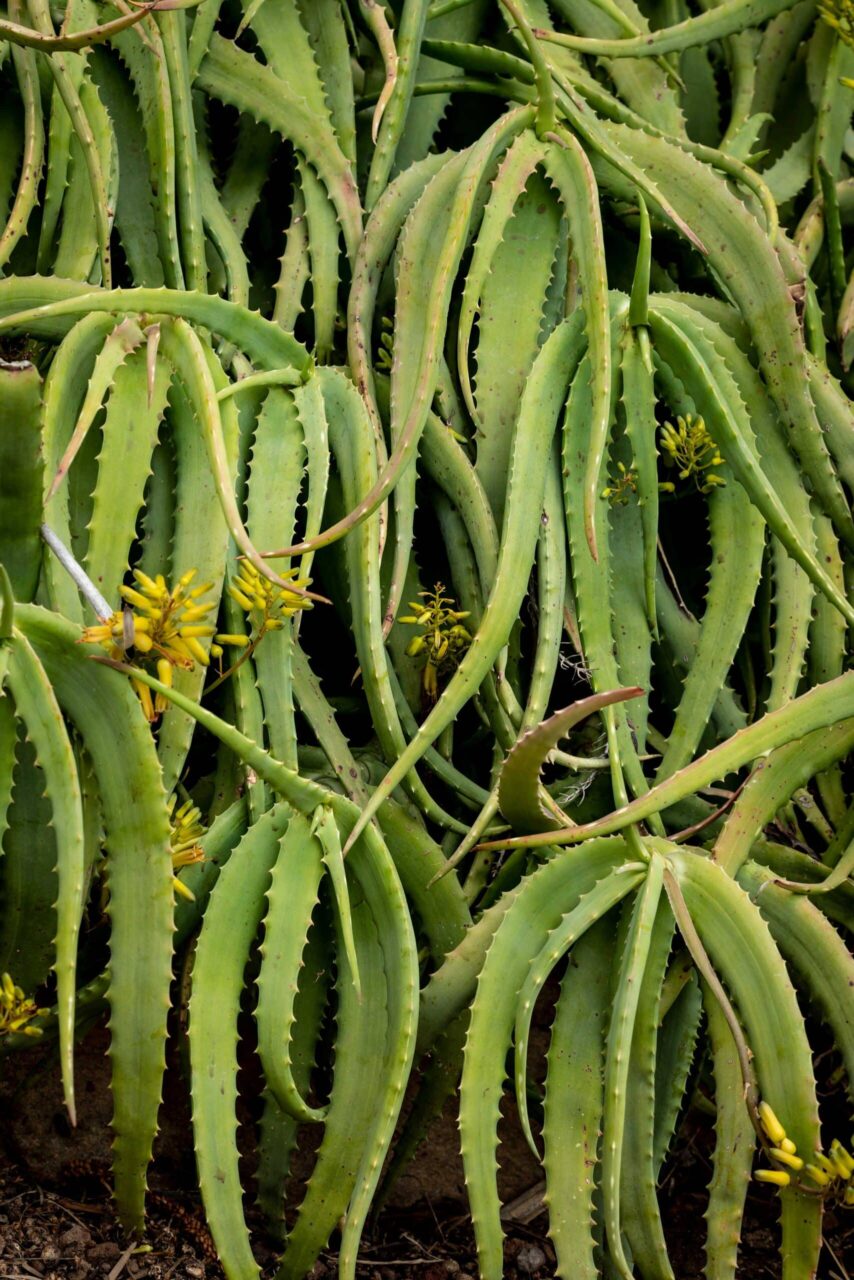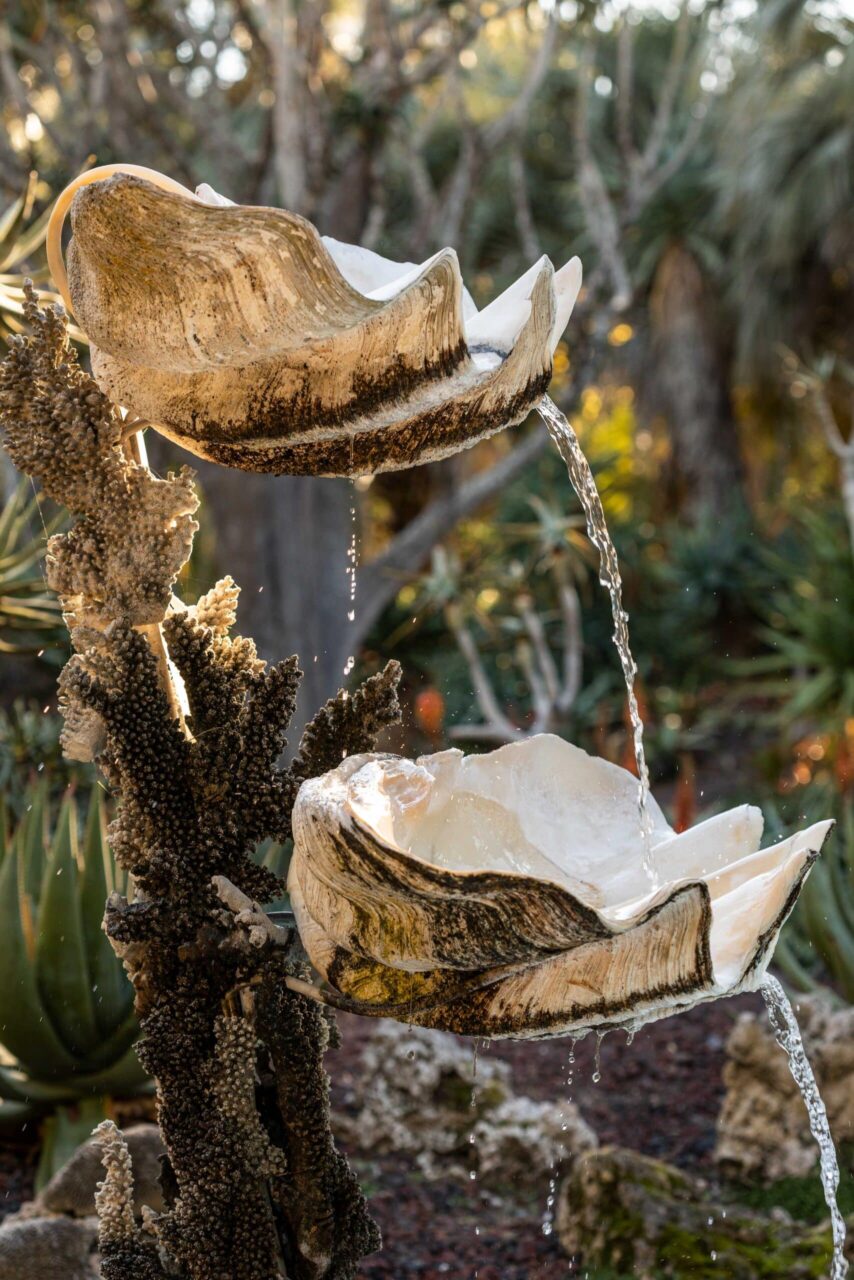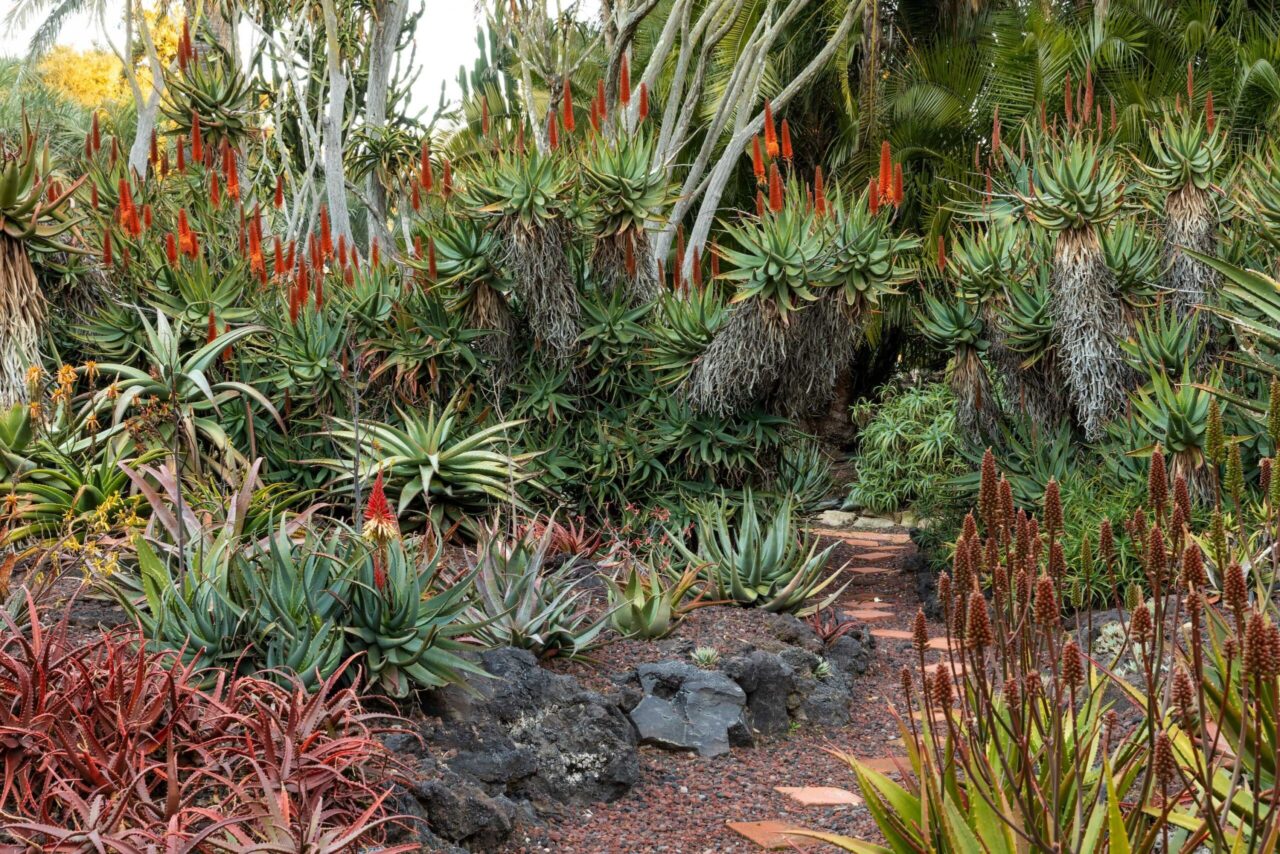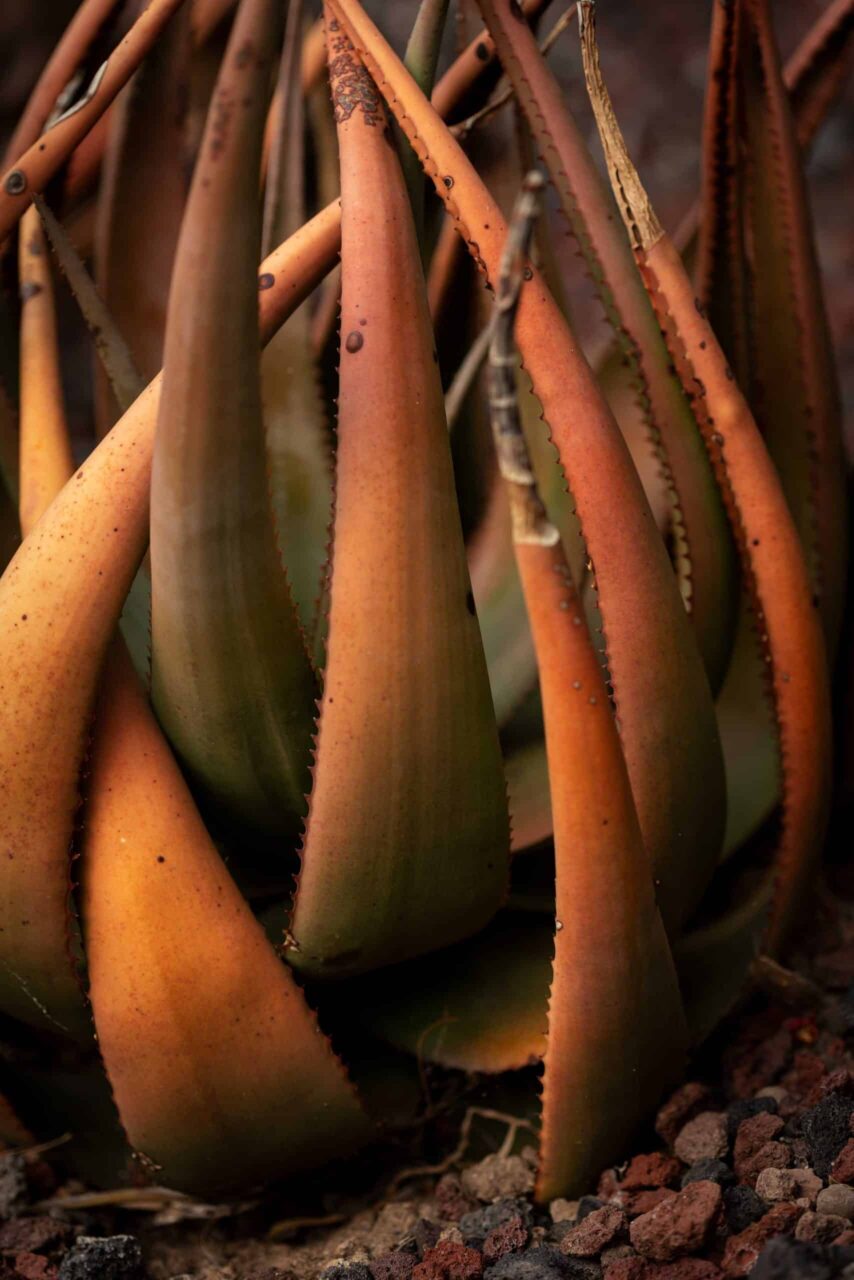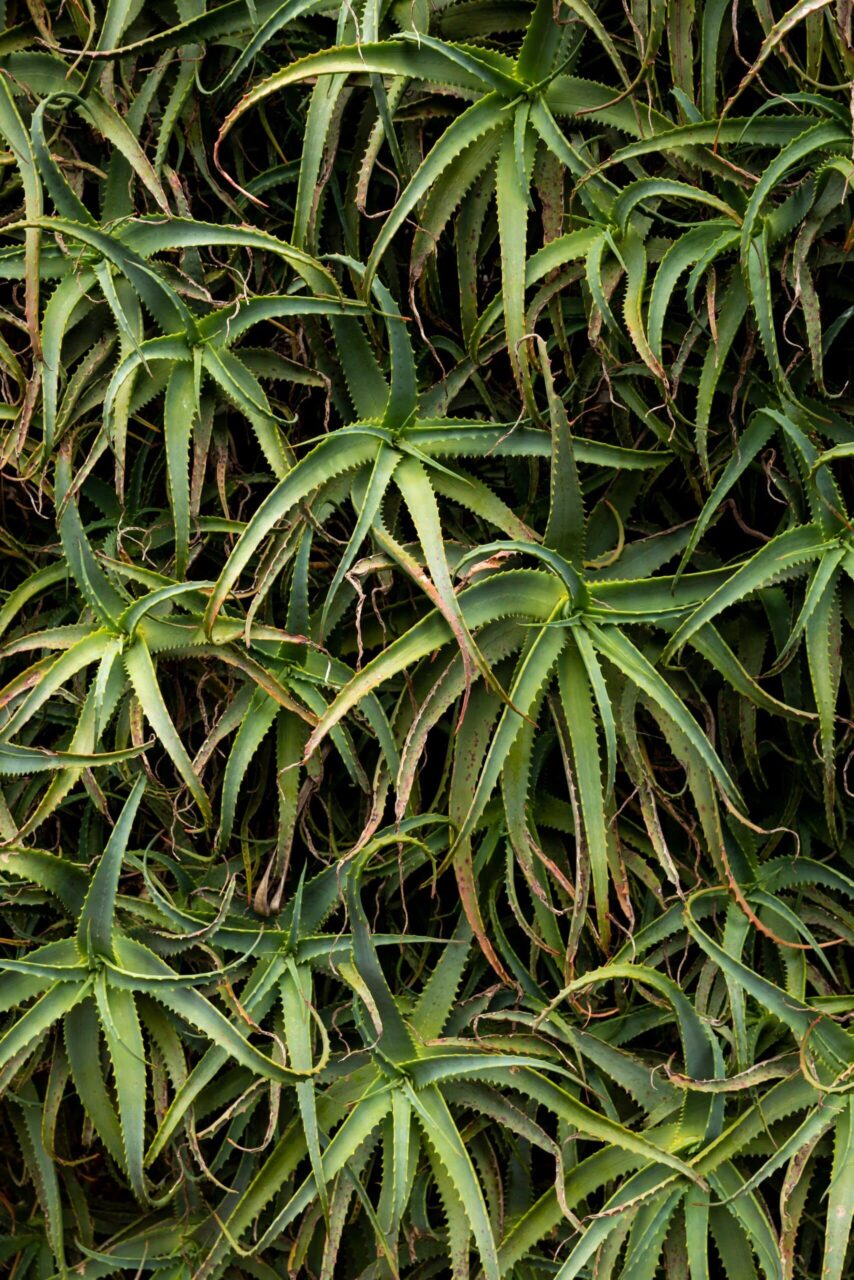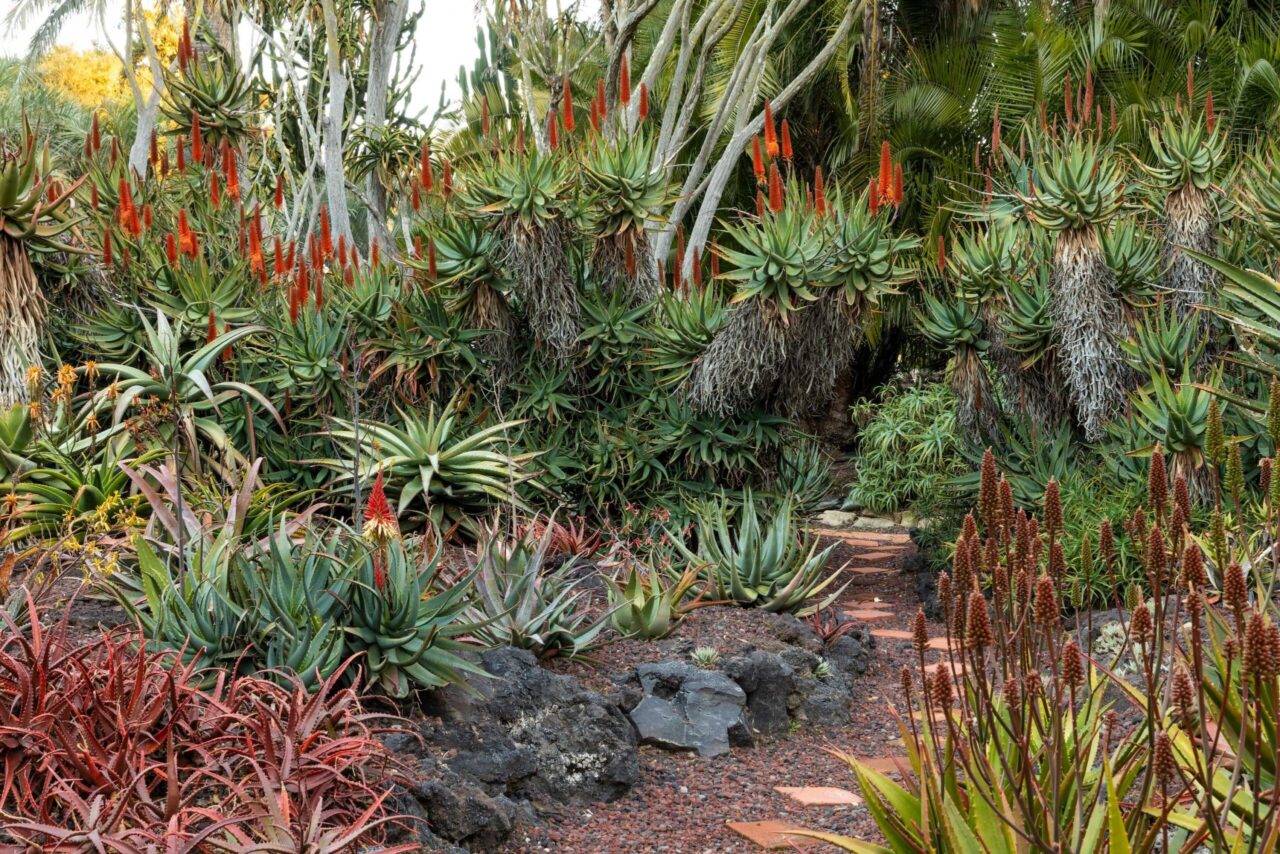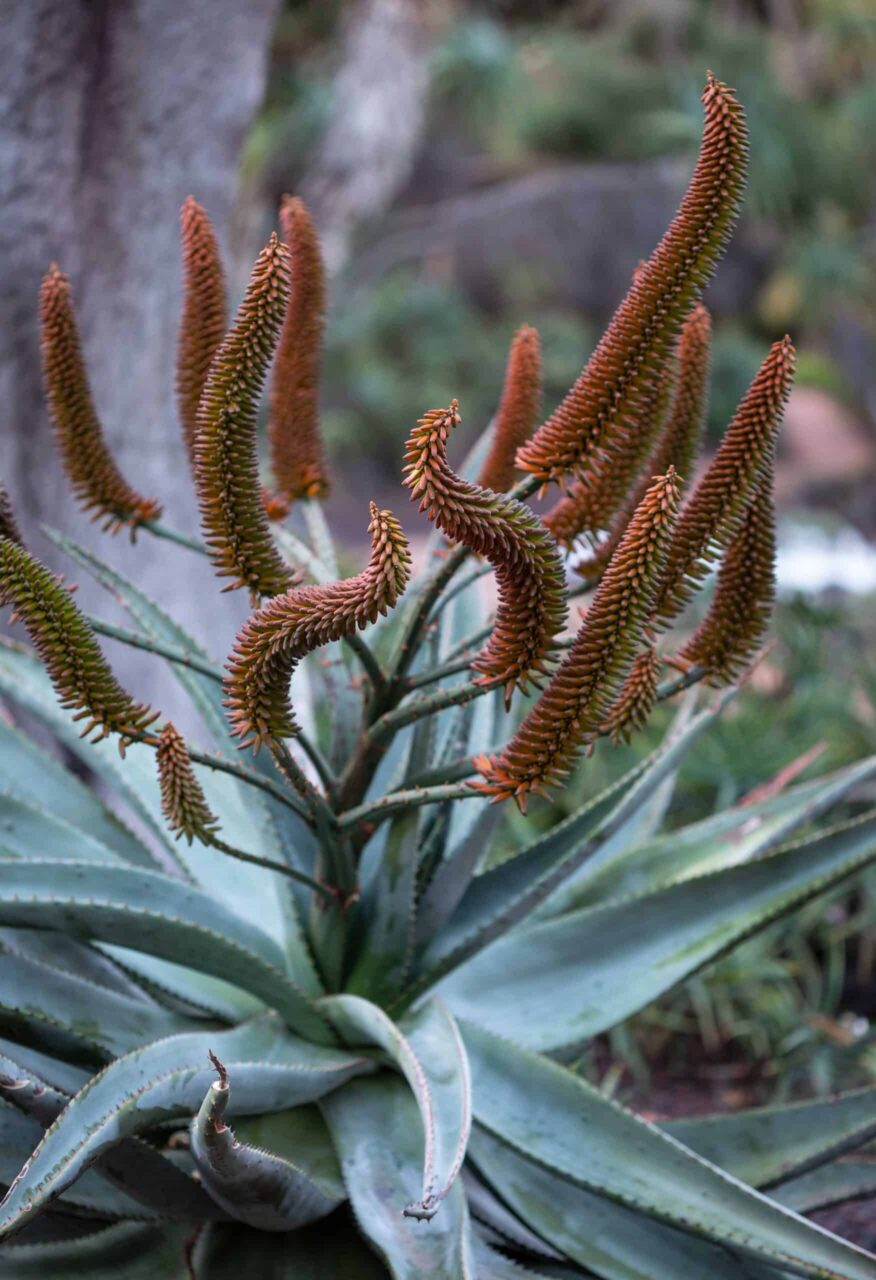Aloe Garden
Winter months find Lotusland’s Aloe Garden filled with spectacular red, yellow, and orange flowers
Aloe Garden
Winter months find Lotusland’s Aloe Garden filled with spectacular red, yellow, and orange flowers, accompanied by the buzzy song of hummingbirds. Many people are familiar with Aloe vera due to its medicinal qualities, yet Aloe vera is just one of over 600 species in the genus Aloe. A diverse group of plants with a native range that stretches from South Africa and Madagascar to the Arabian Peninsula, aloes range in size from the diminutive Aloe descoingsii with its tiny rosettes to the massive tree-like Aloe barberae. Lotusland’s spectacular Garden contains more than 160 Aloe species.
the
Noteworthy
Features
Abalone Pond
Originally created as a children’s wading pool, but later transformed by Madame Ganna Walska into one of Lotusland’s most impressive features. Two exquisite water fountains made of giant clamshells bring the pool to life. Be transported under the sea as you wander through the Aloe Garden.
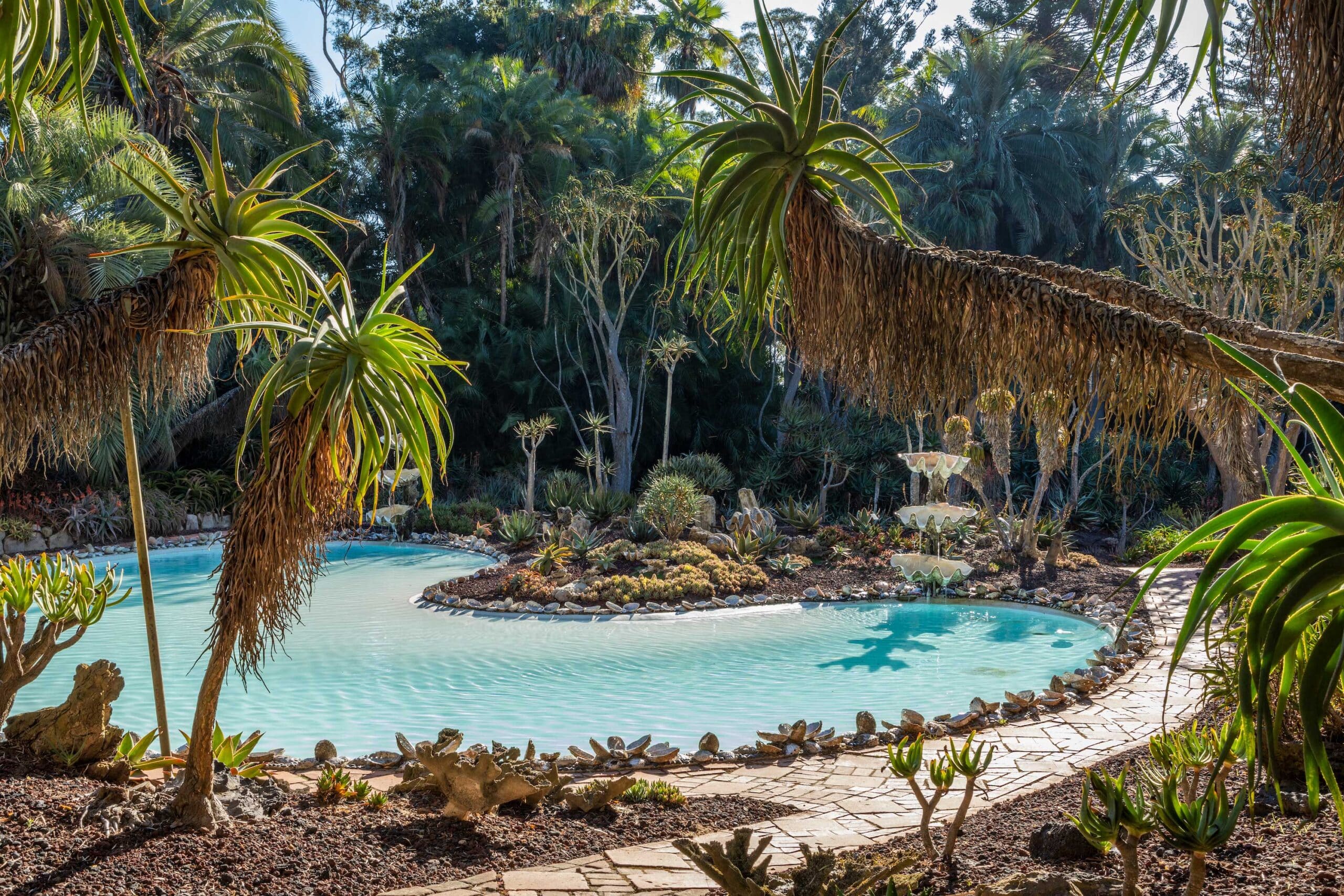
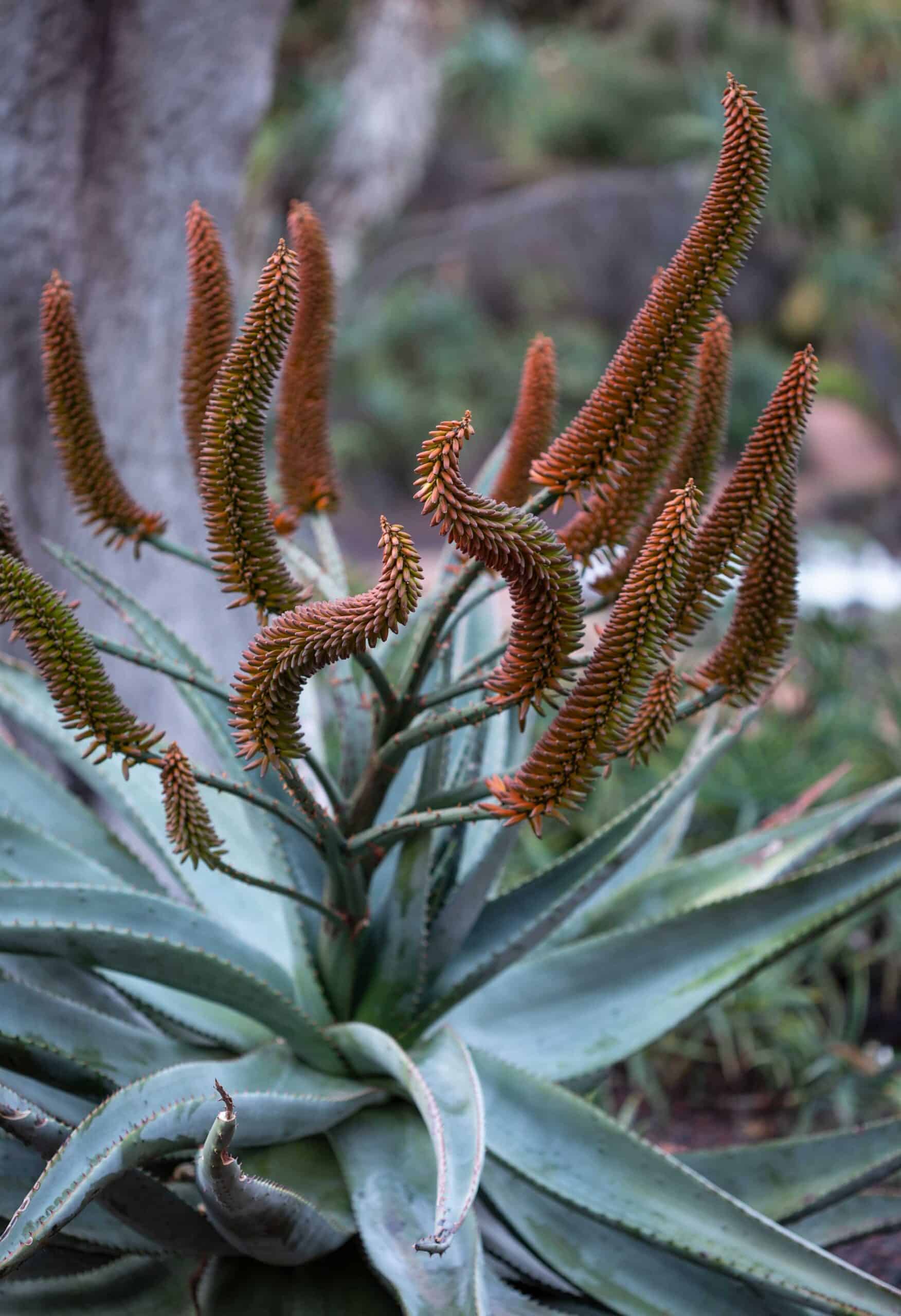
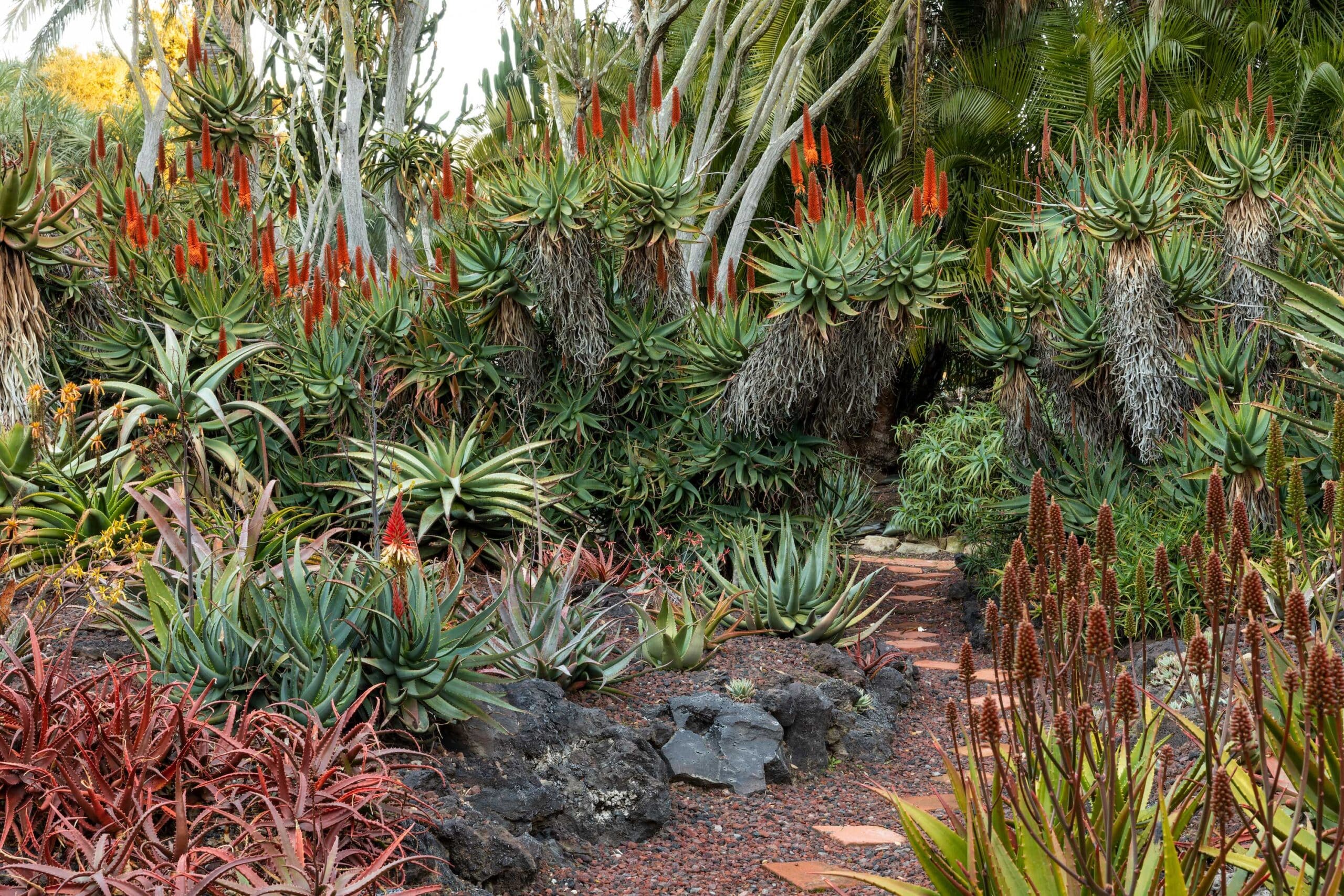
Aloe ferox
The Aloe ferox (Cape aloe) is native to South Africa where it grows across a wide range of habitats. Ferox is Latin for “fierce,” referring to its spiny-edged leaves. Preparations of A. ferox and A. vera are commonly used around the world for cosmetics, medicine, incense, and embalming. Located near the aviary there is an unusual white-flowered form of A. ferox.
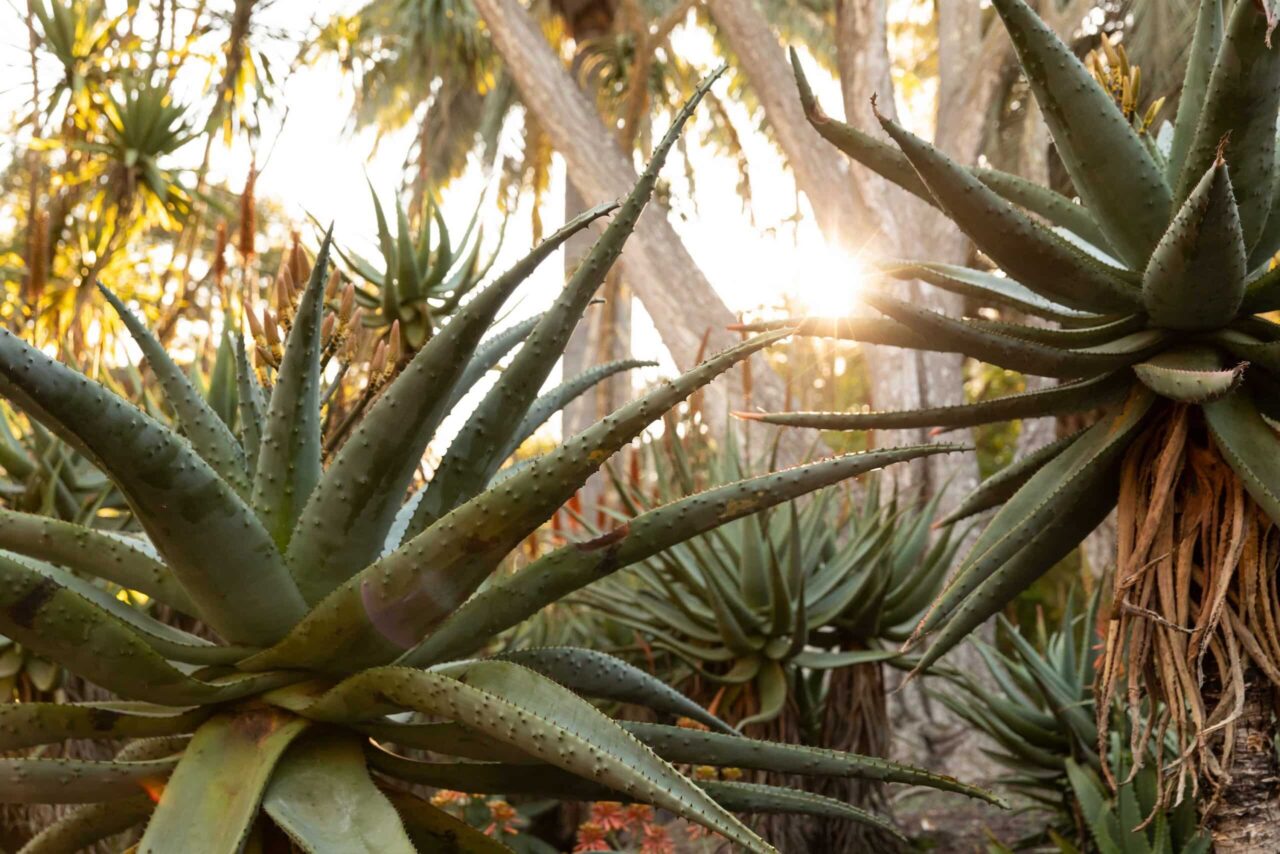
DID YOU KNOW?
Aloe barberae, with its tree-like proportion, is largest of all the aloes.
Not only does it branch repeatedly to form a rounded crown up to 45 feet in height, its large trunk eventually forms a massive, bulging base that can be many feet in diameter just above the soil surface.


